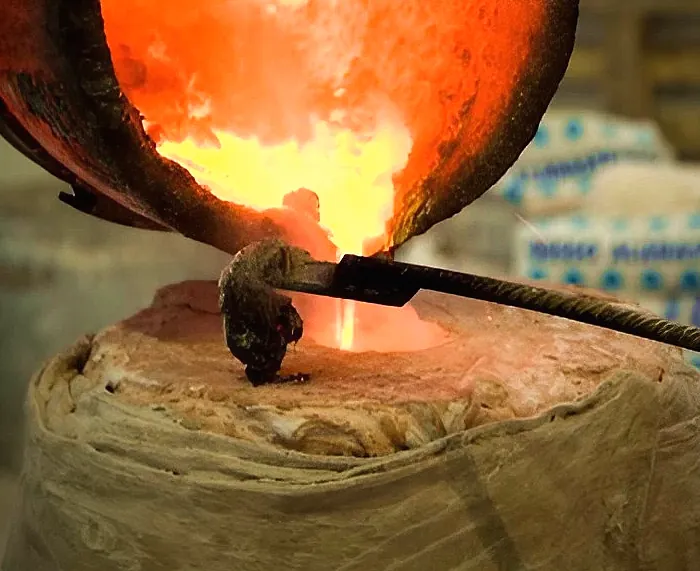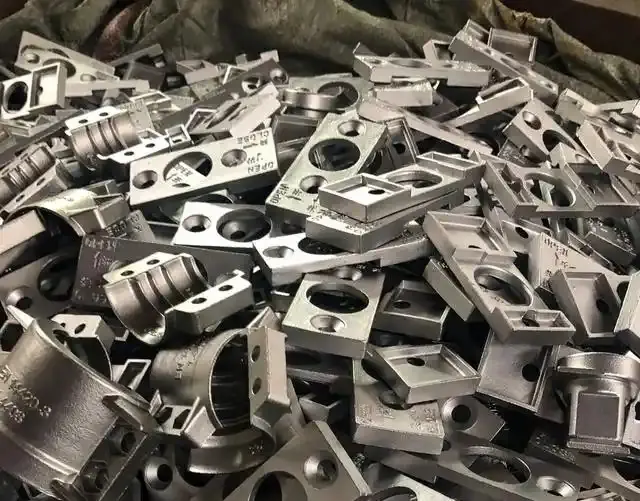The Six Key Benefits of Lost Foam Casting
Author: SAIVS Date Published: Nov 04,2024
In the ever-evolving landscape of manufacturing, selecting the right casting method is crucial for efficiency and cost-effectiveness. Lost foam casting has emerged as a standout process for creating complex and intricate metal parts, making it an ideal choice for purchasing agents looking for high-quality, precise components. Here, we delve into six significant benefits of lost foam casting, underscoring its advantages in terms of efficiency, precision, and versatility.

1. Exceptional dimensional accuracy
Lost foam casting stands out for its ability to produce parts with unparalleled dimensional accuracy. Unlike traditional casting methods that rely on filling molds, lost foam employs expanded polystyrene (EPS) foam patterns that expand to fill every detail of the mold. This results in a net shape that is accurate and intricate, with minimal risk of discrepancies. For purchasing agents, this means fewer rejected parts and reduced costs associated with rework and scrapping.
2. Streamlined Manufacturing Process
One of the most significant advantages of lost foam casting is its ability to reduce the number of manufacturing steps. Traditional casting often requires multiple machining and assembly steps to achieve the desired finish and fit. In contrast, lost foam casting allows for a single, comprehensive casting that minimizes the need for secondary operations. This not only saves time but also cuts labor costs, making it a more economical choice for mass production.
3. Integration of Assemblies
Lost foam casting enables the creation of complex parts as single, integrated units. This reduces the number of components needed in an assembly, which translates into fewer machining and assembly processes. For purchasing agents, this means less risk of assembly errors and a more reliable final product. Parts like engine blocks and cooling system housings, which typically involve intricate internal designs, can be produced with ease using this method.
4. Compatibility with Multiple Metals
Another key advantage of lost foam casting is its versatility in working with various molten metals. The process can accommodate ductile iron, gray iron, aluminum, brass, and stainless steel, which are essential materials in manufacturing. This flexibility allows purchasing agents to source parts made from the optimal metal for their specific application, enhancing product performance and durability.
5. Lower Environmental Impact
Lost foam casting presents a more environmentally friendly alternative to traditional Sand Casting methods. The process requires lower energy consumption and generates less waste, making it a sustainable choice for manufacturers. The absence of binders in the sand used for lost foam casting also allows for faster and cleaner sand recovery, reducing material costs and environmental impact. For purchasing agents, aligning with suppliers that prioritize sustainability can be a significant factor in decision-making.
6. Variety of Densities
When it comes to lost foam patterns, versatility is key. These patterns are available in a range of densities, from 1.4 to 5.0 pounds per cubic foot (pcf), and can be tailored to meet specific weight requirements. Additionally, the patterns can be designed with wall thicknesses of 3-4 mm, optimizing the balance between strength and weight. This customization capability allows purchasing agents to find solutions that best fit their project specifications.
Conclusion
Lost foam casting is a compelling choice for manufacturers and purchasing agents alike. Its benefits—ranging from exceptional dimensional accuracy and streamlined processes to environmental sustainability and compatibility with various metals—make it an attractive option for creating intricate components. By understanding these advantages, purchasing agents can make informed decisions that enhance their production efficiency and product quality.
Why Choose SAIVS™ as Your Supplier?
1.Superb Quality Control Management
At SAIVS, we take pride in our perfect quality management systems and procedures, which guarantees the excellent performance of all our producs, being a professional Investment Casting | Die Casting| Sand Castingmanufacturer in China.
2.Rich Production Experience
With 20 years of experience in production, SAIVS has a deep understanding of the market and trends, and strives for continuous research and innovation. This has created advantages in both the product's performance and appearance.
3.Competitive Prices
As a Chinese factory committed to becoming the most cost-effective Investment Casting | Die Casting| Sand Castingexporter in China, SAIVS provides high-quality products at advantageous prices. By lowering costs and increasing efficiency, we ensure that our customers receive the best possible value for their investment.
4.Perfect After-sales Service
At SAIVS, we strive to provide superior customer service that meets and exceeds expectations. We are always available for any questions or concerns you may have, and we stand by our commitment to providing excellent after-sales support.
Related Posts
-

Unlocking Diversity: 3 Types of Sand Molds Commonly Used in Sand Casting
Learn about the 3 main sand molds used in sand casting.
-

Safety Guidelines for Precision CNC Machining
This comprehensive guide covers training, PPE, machine maintenance, proper setup, emergency procedures, and more to ensure a safer and more efficient manufactur...
-

Differences and characteristics between aluminium alloy pressure casting and gravity casting
Aluminum alloys are widely used in automobile manufacturing, aerospace, shipbuilding and other fields due to their good plasticity, corrosion resistance and lig...
-

Working Principle and Characteristics of Die Casting Technology
Die-casting technology is the process of organically combining and applying three production elements of die-casting, namely, die-casting alloy, die-casting die...
-

The significance of gearbox in industrial applications
Gear systems are integral to a wide range of industrial applications, from automotive to manufacturing machinery. Within these systems, the gear housing...
-

Advantages of 316 Stainless Steel Casting in Manufacturing Hawse Pipes
Stainless steel casting has emerged as a reliable and efficient process for manufacturing hawse pipes used in marine applications. Combining precision engi

